Do you have a question about the Gilera Runner 50 SP 2012 and is the answer not in the manual?
Explains dashboard controls and indicators with a labeled diagram.
Details various indicator lights on the instrument panel.
Describes the digital LCD display functions and indicators.
Explains how to set total and trip odometers and change display units.
Instructions for setting the clock on the digital display.
Details the functions of the ignition keyswitch positions (LOCK, OFF, ON).
Procedures for locking/unlocking steering and operating turn signals.
How to use the horn button and operate the headlight switch.
How to start the engine and open the fuel tank cap.
Instructions for opening the seat and information about vehicle keys.
Explains vehicle identification numbers (chassis, engine) and their importance.
Pre-ride checks for fuel, oil, tires, brakes, and coolant.
Instructions for refueling with petrol and oil, including warning lights.
Importance of checking tyre pressure, wear limits, and specifications.
Guidelines for the break-in period and how to start the engine.
Troubleshooting startup issues and how to stop the engine.
Explains the automatic transmission and how to avoid clutch overheating.
General tips for safe riding, including helmet use, speed, braking, and road conditions.
Description and operation of air vents for rider comfort.
How to check and top up the hub oil level using the dipstick.
Information on tyre pressure checks, wear limits, and specifications.
Procedure for removing and refitting the spark plug, including cautions.
Steps for removing, cleaning, and refitting the air filter element.
Servicing the secondary air system and checking coolant level.
Procedure for checking and topping up brake fluid level.
How to access and remove the battery, with safety cautions.
Checking electrolyte level and battery care during long periods of inactivity.
Location of fuses and specifications for light bulbs.
Procedure for changing headlight and taillight bulbs.
How to adjust the headlight beam alignment.
Procedure for replacing front turn indicator bulbs.
Procedure for replacing rear taillight and stop light bulbs.
Replacing rear turn indicator bulbs and adjusting mirrors.
How to adjust the engine idle speed.
Information on brake disc and pad wear, and when to service brakes.
Dealing with tyre punctures and preparing the vehicle for storage.
Instructions and precautions for washing and cleaning the vehicle.
Diagram showing overall dimensions of the scooter.
Details on engine type, capacity, compression, ignition, and general vehicle specs.
Technical details on lubrication, cooling, transmission, and wheel specifications.
Specifications for brakes, total weight, and included toolkit.
Recommendation to use original parts and warnings about non-original ones.
Summary table of maintenance operations at specific mileage intervals.
List of recommended lubricants, greases, and fluids with specifications.
Information on Selenia lubricants and their use with Piaggio-Gilera scooters.
Explains dashboard controls and indicators with a labeled diagram.
Details various indicator lights on the instrument panel.
Describes the digital LCD display functions and indicators.
Explains how to set total and trip odometers and change display units.
Instructions for setting the clock on the digital display.
Details the functions of the ignition keyswitch positions (LOCK, OFF, ON).
Procedures for locking/unlocking steering and operating turn signals.
How to use the horn button and operate the headlight switch.
How to start the engine and open the fuel tank cap.
Instructions for opening the seat and information about vehicle keys.
Explains vehicle identification numbers (chassis, engine) and their importance.
Pre-ride checks for fuel, oil, tires, brakes, and coolant.
Instructions for refueling with petrol and oil, including warning lights.
Importance of checking tyre pressure, wear limits, and specifications.
Guidelines for the break-in period and how to start the engine.
Troubleshooting startup issues and how to stop the engine.
Explains the automatic transmission and how to avoid clutch overheating.
General tips for safe riding, including helmet use, speed, braking, and road conditions.
Description and operation of air vents for rider comfort.
How to check and top up the hub oil level using the dipstick.
Information on tyre pressure checks, wear limits, and specifications.
Procedure for removing and refitting the spark plug, including cautions.
Steps for removing, cleaning, and refitting the air filter element.
Servicing the secondary air system and checking coolant level.
Procedure for checking and topping up brake fluid level.
How to access and remove the battery, with safety cautions.
Checking electrolyte level and battery care during long periods of inactivity.
Location of fuses and specifications for light bulbs.
Procedure for changing headlight and taillight bulbs.
How to adjust the headlight beam alignment.
Procedure for replacing front turn indicator bulbs.
Procedure for replacing rear taillight and stop light bulbs.
Replacing rear turn indicator bulbs and adjusting mirrors.
How to adjust the engine idle speed.
Information on brake disc and pad wear, and when to service brakes.
Dealing with tyre punctures and preparing the vehicle for storage.
Instructions and precautions for washing and cleaning the vehicle.
Diagram showing overall dimensions of the scooter.
Details on engine type, capacity, compression, ignition, and general vehicle specs.
Technical details on lubrication, cooling, transmission, and wheel specifications.
Specifications for brakes, total weight, and included toolkit.
Recommendation to use original parts and warnings about non-original ones.
Summary table of maintenance operations at specific mileage intervals.
List of recommended lubricants, greases, and fluids with specifications.
Information on Selenia lubricants and their use with Piaggio-Gilera scooters.
| Displacement | 49.4 cc |
|---|---|
| Fuel System | Carburetor |
| Cooling System | Liquid cooled |
| Front Suspension | Telescopic fork |
| Rear Suspension | Single shock absorber |
| Front Brake | Disc |
| Front Tire | 120/70-12 |
| Rear Tire | 130/70-12 |
| Fuel Capacity | 7.0 liters |
| Engine Type | Single cylinder, 2-stroke |
| Bore x Stroke | 40 mm x 39.3 mm |
| Transmission | Automatic |
| Rear Brake | Drum |
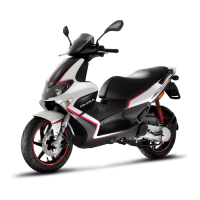
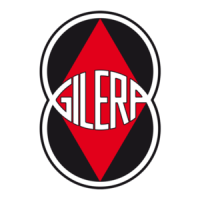
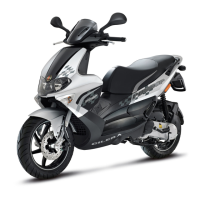

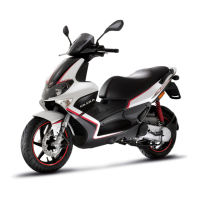
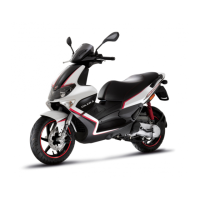
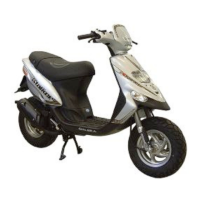

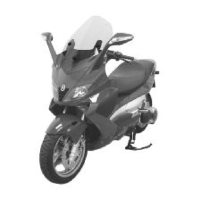
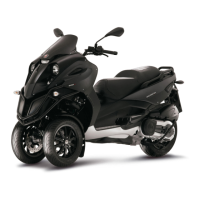
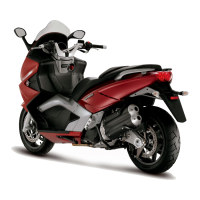
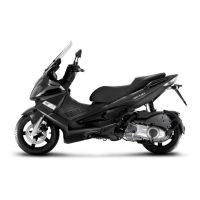
